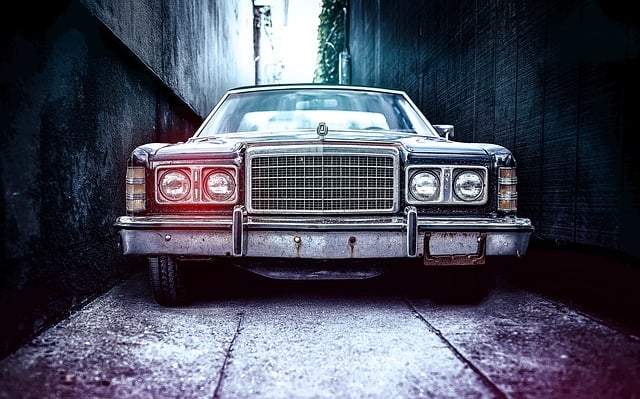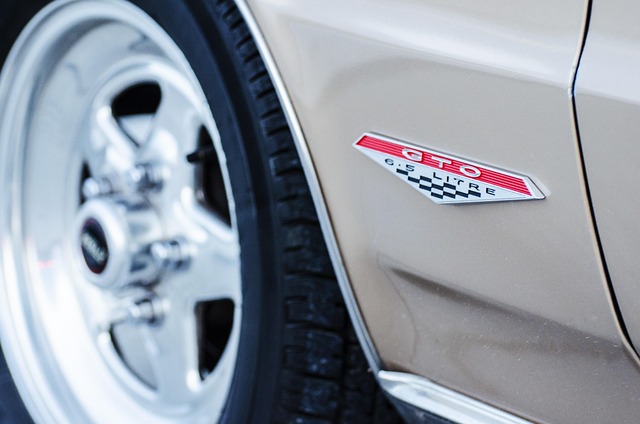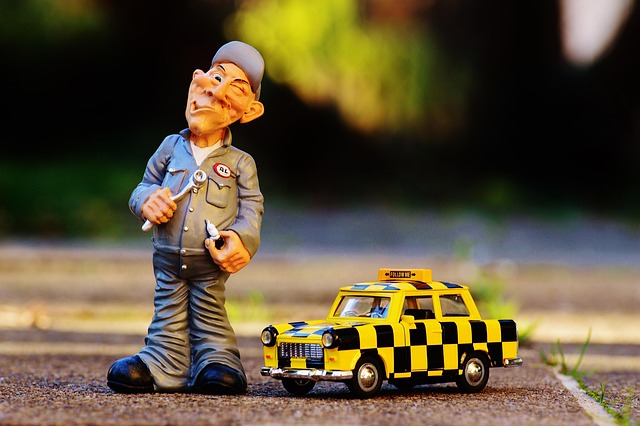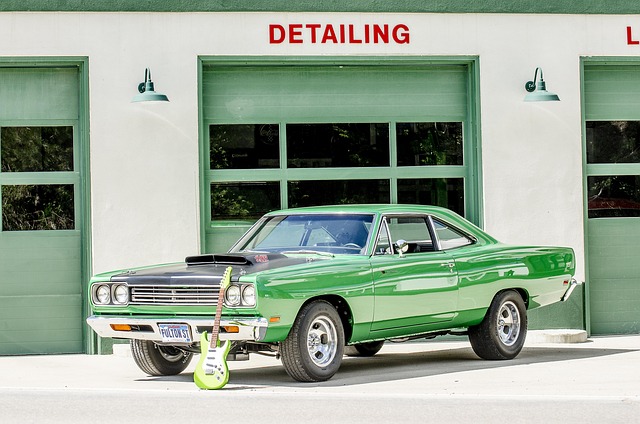Streamline Collision Repair Downtown: Quick Estimate Tips
Collision repair downtown presents unique challenges due to urban environments, demanding efficient,…….
In the heart of bustling cities, where concrete and steel dominate the skyline, a unique and transformative process takes place—collision repair downtown. This concept, often an overlooked yet powerful tool, refers to the art and science of revitalizing and rejuvenating urban areas that have been affected by accidents, natural disasters, or neglect. In essence, it is about healing the wounds of a city, restoring its former glory, and creating vibrant, functional spaces once again. This article aims to provide an in-depth exploration of collision repair downtown, delving into its various facets, global impact, and potential for shaping urban landscapes. By understanding this process, we can appreciate its significance in building resilient and thriving urban communities.
Collision repair downtown is a comprehensive approach to urban renewal that focuses on the physical transformation of downtown areas following disruptions. It involves a multi-faceted strategy combining architectural restoration, infrastructure development, community engagement, and economic revitalization. The primary goal is to rebuild and reinvent these areas, making them more functional, aesthetically pleasing, and economically viable.
The process typically includes several key stages:
Assessment and Planning: Experts conduct thorough assessments of the damaged area, evaluating structural integrity, environmental impact, and community needs. This phase involves creating a detailed plan outlining the repair and renovation strategies.
Structural Repair and Restoration: Skilled technicians and architects take on the daunting task of repairing or replacing damaged structures, ensuring historical and architectural significance is preserved where possible. This may include rebuilding historic buildings, bridges, or iconic landmarks.
Infrastructure Upgrades: Modernization of essential infrastructure is a critical aspect. This involves enhancing road networks, improving public transportation systems, installing new utility lines, and optimizing drainage to create a robust foundation for the renewed area.
Community Engagement and Design: Collaboration with local communities is vital. This stage includes public consultations, where residents can provide input on design elements, amenities, and functionality. The final design should reflect the needs and aspirations of the people who will be using the space daily.
Economic Revitalization: A successful collision repair project aims to stimulate the local economy. It involves attracting businesses, encouraging entrepreneurship, and creating job opportunities to ensure the area’s long-term sustainability.
The concept of collision repair downtown has evolved over centuries, shaped by historical events and urban planning principles. In ancient cities like Rome and Athens, reconstruction after battles and natural disasters played a significant role in preserving cultural heritage. During the Renaissance, European towns embraced grand architectural designs to showcase power and prosperity, leaving behind a rich legacy of beautiful downtown areas.
In modern times, the need for collision repair downtown became more pronounced following World War II. Many urban centers in Europe and North America suffered severe damage, leading to massive reconstruction efforts. The post-war period also saw the rise of urban renewal projects in the United States, often involving controversial demolition and redevelopment strategies. Over time, a more holistic approach emerged, focusing on sustainable and community-driven development.
Collision repair downtown is not confined to any single region; it has gained global recognition as an effective strategy for urban regeneration. Cities worldwide have adopted this model, adapting it to their unique cultural, economic, and environmental contexts. For instance:
Europe: Many European cities, including Berlin, Paris, and Rome, have successfully implemented collision repair projects. These efforts often involve restoring historic landmarks and revitalizing waterfront areas, attracting tourists and fostering local pride.
North America: Major metropolitan areas like New York City, Chicago, and Toronto have embarked on significant downtown renewal initiatives. These projects focus on creating mixed-use developments, improving public spaces, and promoting sustainable transportation.
Asia: Rapidly growing cities in Asia, such as Tokyo, Singapore, and Hong Kong, are incorporating collision repair principles into their urban planning to manage rapid urbanization and preserve cultural heritage.
Several global trends are influencing the direction of collision repair downtown:
Sustainability: Environmental consciousness is a driving force behind modern urban renewal. Projects increasingly focus on energy-efficient buildings, green spaces, and sustainable transportation options to reduce carbon footprints.
Smart Cities: The integration of technology is transforming cities into ‘smart’ hubs. Collision repair initiatives incorporate smart infrastructure, data analytics, and digital solutions to enhance efficiency, improve services, and engage citizens.
Community Participation: There is a growing emphasis on community engagement and ownership in urban renewal projects. Involving residents from the planning stages ensures that the revitalized areas meet their needs and reflect local culture.
Mixing Land Uses: Downtown areas are being redesigned to accommodate diverse land uses, including residential, commercial, retail, and cultural spaces, fostering vibrant and inclusive communities.
Collision repair downtown has a significant economic impact, both locally and regionally. The process generates numerous job opportunities in construction, architecture, engineering, and related sectors. It also attracts investments from various sources:
Public Funding: Governments often allocate substantial budgets for urban renewal projects, reflecting their commitment to community development and infrastructure improvement.
Private Sector Investment: Developers and real estate investors see collision repair areas as prime opportunities for mixed-use developments, retail spaces, and residential properties.
Tourism Boost: Restored downtown areas with improved amenities and attractions can significantly enhance a city’s tourism appeal, contributing to the local economy.
The economic benefits of collision repair downtown are multifaceted:
Job Creation: These projects create short-term construction jobs and long-term employment opportunities in various sectors, stimulating local economies.
Business Growth: Revitalized areas attract businesses, encourage entrepreneurship, and foster innovation, leading to increased tax revenues for cities.
Property Values: Improved infrastructure and aesthetically pleasing surroundings enhance property values, benefiting both residents and investors.
Tourism Revenue: Historic landmarks, cultural attractions, and vibrant public spaces draw tourists, contributing to the local tourism industry.
Technological advancements have revolutionized collision repair downtown, making processes more efficient, precise, and sustainable:
3D Modeling and Simulation: Advanced 3D modeling software allows architects and urban planners to design virtual prototypes of collision repair projects. This technology aids in visualizing the final product, identifying potential issues early, and streamlining construction processes.
Drone Technology: Drones are being utilized for detailed aerial surveys, monitoring progress, and ensuring structural integrity during repairs. They provide a safe, efficient, and cost-effective way to gather data from hard-to-reach areas.
Building Information Modeling (BIM): BIM is transforming construction management by creating digital representations of buildings. It improves coordination among various project stakeholders, enhances efficiency, and reduces errors.
Smart Materials: New materials with innovative properties are being explored for collision repair. For instance, self-healing concrete can mend cracks and corrosion, extending the lifespan of structures.
These technological advancements offer significant advantages:
Precision and Efficiency: Advanced tools enable more precise repairs and faster construction times, reducing project costs and minimizing disruptions to nearby areas.
Sustainability: New technologies contribute to sustainable urban development by optimizing energy use, reducing waste, and promoting eco-friendly materials and practices.
Data-Driven Decisions: The ability to gather and analyze vast amounts of data allows for better decision-making, predictive maintenance, and long-term planning for city managers.
Looking ahead, the future holds even greater potential:
Artificial Intelligence (AI): AI can automate certain tasks, optimize resource allocation, and enhance project management efficiency. It can also assist in predicting community needs and preferences.
Internet of Things (IoT): IoT devices embedded in infrastructure can provide real-time data on traffic flow, energy consumption, and environmental conditions, enabling smart city applications.
Collision repair downtown is guided by a web of policies, regulations, and legislative frameworks that vary across jurisdictions:
Zoning Laws: Local governments use zoning regulations to control land use and development. These laws dictate the type of structures allowed, their height, density, and location, ensuring orderly urban growth.
Building Codes: Building codes establish safety standards for construction and repair. They cover structural integrity, fire safety, plumbing, electrical systems, and accessibility requirements.
Environmental Regulations: Environmental policies protect natural resources and ecosystems during urban renewal projects. These regulations may include provisions for hazardous material management, waste disposal, and environmental impact assessments.
Cultural Heritage Protection: Many cities have ordinances to preserve historical buildings and landmarks. These measures ensure that collision repair projects respect cultural heritage while incorporating modern elements.
Policies and regulations play a crucial role in shaping the outcome of collision repair downtown initiatives:
Encouraging Investment: Favorable policies can attract investors by offering incentives, tax breaks, or streamlined permitting processes, facilitating faster project implementation.
Ensuring Quality and Safety: Strict regulations ensure that repairs meet high standards, protecting public safety and promoting long-term sustainability.
Preserving Cultural Heritage: Effective policies protect historical sites, ensuring that collision repair projects complement rather than diminish a city’s cultural tapestry.
Community Engagement: Some regulations encourage community participation in decision-making processes, fostering a sense of ownership among residents.
Despite its numerous benefits, collision repair downtown faces several challenges and criticisms:
Funding Shortages: Securing adequate funding is often a significant hurdle. Public budgets may be limited, and private investments are subject to market fluctuations, making consistent financing challenging.
Community Disruption: The process can cause temporary disruptions in affected areas, including traffic diversions, construction noise, and access restrictions, which may inconvenience residents and businesses.
Historical Preservation Debates: While preserving cultural heritage is essential, there are sometimes conflicts between restoring historical landmarks and incorporating modern design elements to meet contemporary needs.
Lack of Public Awareness: Misconceptions about collision repair projects can arise due to a lack of public understanding. Effective communication and community engagement strategies are necessary to address these concerns.
To overcome these challenges, the following strategies can be employed:
Diverse Funding Sources: Governments should explore various funding options, including public-private partnerships, grants, and crowdfunding initiatives, to ensure sustainable financing.
Community Engagement and Education: Active involvement of residents in planning processes, along with educational campaigns, can help alleviate concerns and build support for the project.
Hybrid Design Solutions: Architects can find creative solutions that blend historical elements with modern designs, respecting cultural heritage while catering to contemporary requirements.
Transparent Communication: Clear and consistent communication about project goals, timelines, and potential impacts can manage expectations and gain public support.
Paris embarked on a ambitious collision repair project focusing on the revitalization of the Seine River waterfront. This initiative aimed to restore the river’s former glory while incorporating modern amenities and cultural attractions. The project involved:
Tokyo’s iconic Shibuya Crossing underwent a significant collision repair transformation to accommodate the area’s dense population and modern needs. The project included:
Chicago revitalized its iconic lakefront, addressing issues related to erosion, unsafe paths, and outdated infrastructure. The project involved:
The future of collision repair downtown is brimming with potential:
Smart Cities Evolution: As technology advances, cities will increasingly integrate AI, IoT, and data analytics into their urban fabric, enhancing efficiency and citizen services.
Sustainable Focus: Environmental sustainability will remain a cornerstone of collision repair initiatives, with an emphasis on green infrastructure, energy-efficient buildings, and eco-friendly materials.
Cultural Tourism: Downtown areas will continue to be shaped by cultural considerations, attracting tourists interested in immersive experiences and historical sites.
Mixing Land Uses: The trend towards mixed-use developments will persist, creating vibrant 24/7 communities with diverse residential, commercial, and recreational options.
To capitalize on these prospects, urban planners and policymakers should:
Long-Term Planning: Develop comprehensive plans that consider the evolving needs of cities and their residents over several decades.
Collaborative Approaches: Foster partnerships between government agencies, private developers, community groups, and academic institutions to leverage diverse expertise and resources.
Adaptability: Embrace flexibility in planning, allowing for adjustments based on changing technologies, cultural trends, and public preferences.
Community Engagement 2.0: Utilize digital platforms and social media to enhance community participation, ensuring that collision repair projects remain responsive to local needs.
Collision repair downtown is a powerful instrument for urban transformation, offering a holistic approach to healing and revitalizing cities. Its global impact, from historic European centers to modern Asian metropolises, attests to its versatility and effectiveness. By addressing infrastructure challenges, preserving cultural heritage, and engaging communities, these projects can transform urban landscapes while enhancing the quality of life for residents.
As cities face increasing pressures from urbanization and climate change, collision repair downtown initiatives will play a pivotal role in building sustainable, resilient, and culturally rich urban futures. With thoughtful planning, innovative technologies, and community involvement, these endeavors can redefine what makes a city truly great.

Collision repair downtown presents unique challenges due to urban environments, demanding efficient,…….

Collision repair downtown shops provide essential services for vehicle owners after accidents, offer…….

Customer reviews play a pivotal role in shaping the reputation of collision repair services in downt…….

Collision repair downtown is a crucial service for vehicle owners, ensuring cars return to pre-accid…….

Online reviews are crucial for consumers seeking collision repair downtown, offering insights into w…….

Collision repair downtown is a crucial service for vehicle owners, addressing from minor dents to ma…….